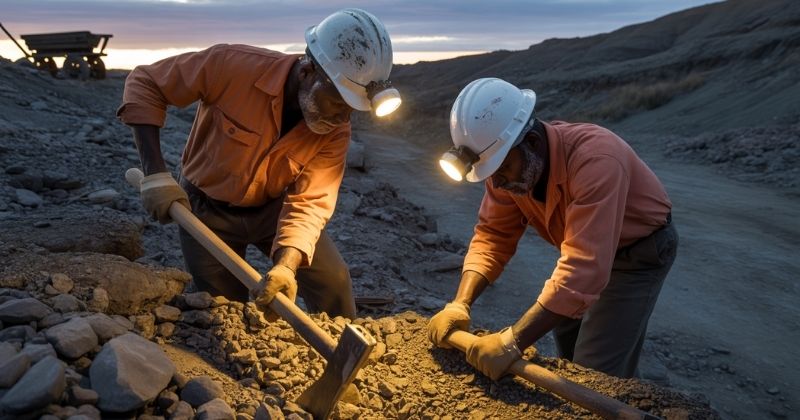
South Africa has experienced an increase in gross domestic product during the second quarter of 2025, yet the upturn has not been large enough to prevent the continuation of a per capita recession. The data released by Statistics South Africa indicated that the economy grew by 0.8% in this quarter, a figure that exceeded even the more optimistic forecasts put forward by analysts. This growth, while welcome, comes against a backdrop of persistent unemployment, weak investment confidence, and fragile household balance sheets, meaning that the benefits are not filtering through evenly across society.
Key Takeaways
- GDP Growth Exceeds Expectations but Remains Weak: South Africa recorded a 0.8% GDP increase in Q2 2025, surpassing forecasts, yet the pace of growth remains far below what is required to improve living standards, given that population growth is 1.5% annually.
- Mining and Manufacturing Provide the Boost: Strong rebounds in mining and manufacturing were the primary drivers of the improved figures, with both sectors contributing 0.2 percentage points to overall GDP, although reliance on traditional industries highlights the lack of diversification in the economy.
- Per Capita Recession Persists: Despite modest economic resilience, South Africans are still becoming poorer in real terms, as growth fails to outpace population expansion, leaving households under pressure and underlining the urgent need for structural reforms and greater investment.
About Arcadia Finance
Arcadia Finance makes borrowing easy. Apply once, pay no fees, and access offers from 19 NCR-compliant lenders. Experience a fast, transparent process with loan options built around your financial needs.
Year-on-Year and Comparative Performance
When compared to the same period last year, growth came in at 0.6%. A comparison of the first six months of 2025 with the same timeframe in 2024 revealed a growth rate of 0.7%. These figures show that while the economy is expanding at a steady pace, the improvement is still very modest by global standards. In fact, other emerging markets such as India and Brazil are recording growth rates more than three times higher, which highlights South Africa’s struggle to compete for international investment and trade opportunities.

Contributions from Manufacturing and Mining
Seven of the ten divisions within the manufacturing sector reported positive growth rates. Mining and manufacturing were the two industries that provided the most substantial boost to economic performance. Mining and quarrying output rose by 3.7%, which translated into a 0.2 percentage point contribution to the overall GDP. Similarly, the manufacturing sector grew by 1.8%, also contributing 0.2 percentage points to the economy.
The fact that resource extraction and industrial output remain the backbone of GDP shows how reliant the economy is on traditional sectors, while newer industries such as technology and renewable energy are still lagging behind in terms of contribution.
The headline numbers presented by Stats SA came in stronger than widely anticipated. Economists surveyed by Reuters had generally expected quarterly GDP growth to reach only 0.5%. Economists at Nedbank had estimated an outcome of 0.6%, accurately noting that rebounds in mining and manufacturing would provide the necessary momentum following the weakness seen in the previous quarter. This surprise to the upside offers some short-term reassurance to policymakers and investors, yet it does not mask the longer-term structural obstacles that continue to weigh heavily on the economy.
Growth Still Below What the Population Requires
Despite the more encouraging performance compared with the first quarter of 2025, when GDP rose by a mere 0.1%, the current rate of expansion is not sufficient to match the country’s population growth. South Africa’s population grows at an estimated rate of around 1.5% each year, and therefore anything lower than this benchmark results in shrinking average wealth levels. As such, South Africans continue to face a per capita recession, with living standards declining rather than improving.
For ordinary citizens, this translates into rising household pressures, with salaries stretched further and the cost of essential goods eroding disposable income, particularly for lower- and middle-income families.
According to leading economists, the GDP results demonstrate a certain degree of resilience within the South African economy, especially in light of both local and international challenges. Yet, it is also evident that annual growth of just 0.6% lags approximately one percentage point behind population growth. This situation underlines the deeper structural issues holding the country back from realising its full economic potential. Experts point to inadequate infrastructure, policy uncertainty, and ongoing energy instability as some of the key constraints that have held back stronger, more sustainable levels of economic expansion.

Economic Outlook for 2025 and Beyond
The expectations for the remainder of 2025 are far from robust. Forecasts point towards an overall growth rate of 1.0% for the year, followed by a gradual improvement to 1.4% in 2026 and 1.9% in 2027. Although these numbers suggest incremental progress, they remain below what is needed to significantly alter the economic trajectory. The persistence of tariffs imposed by the United States and ongoing uncertainty in global trade weigh heavily on projections. At the same time, the local environment benefits from contained inflation, multiple interest rate reductions, and some progress with structural reforms.
Nevertheless, there is widespread concern that without faster reforms and decisive action on state-owned enterprises, the economy could remain stuck in a cycle of underperformance relative to its peers.
Sectoral Trends Adding Support
Certain industries continue to provide resilience within the broader economy. Automotive sales remain robust, assisted by cheaper borrowing costs and increasing consumer appetite for entry-level vehicles. Agriculture is also performing strongly, helped by favourable weather patterns and greater levels of investment in modern machinery. Mining and manufacturing are showing tentative signs of recovery, while trade expansion reflects improvements in household incomes, with wage increases moving ahead of inflation. However, the sustainability of these sectoral gains is uncertain, as electricity supply disruptions and logistical bottlenecks continue to pose a risk to both agricultural exports and industrial productivity.
Warnings on Structural Challenges
Economists have stressed that although the economy has areas of resilience, long-term recovery will rely on meaningful structural reforms and stronger private sector involvement. Without an upturn in domestic investment, government budgets are expected to stay under significant pressure, and international ratings agencies are unlikely to improve their outlook on the country. The warning is particularly relevant as government debt levels remain high, crowding out fiscal space for new development projects, while public sentiment grows increasingly weary of slow progress on job creation.
Interest Rate Prospects
There is cautious optimism that the South African Reserve Bank may have the capacity to implement a rate cut later this month or in the months ahead. The reasoning behind this is that inflation remains close to the lower boundary of the official target range of 3% to 6%, while the United States Federal Reserve has already moved towards cutting its rates. The combination of weak growth, lower inflation, and international monetary developments could provide the Reserve Bank with room to adjust its stance in support of domestic activity. If rate cuts do materialise, they could bring short-term relief for indebted households and struggling businesses, although analysts caution that such measures alone will not be sufficient to address the deep-seated structural barriers weighing on the economy.
Conclusion
South Africa’s second quarter economic data paints a mixed picture of resilience and vulnerability. While GDP growth outperformed forecasts, the improvement is too limited to reverse the country’s per capita recession, with citizens continuing to face financial strain as living costs outpace income growth. Mining and manufacturing provided short-term momentum, yet structural weaknesses, low investment confidence, and ongoing challenges such as energy instability and trade pressures remain unresolved. Looking ahead, forecasts suggest only gradual improvement, making it clear that without decisive reforms and stronger private sector participation, the economy risks remaining trapped in a cycle of underperformance.
Fast, uncomplicated, and trustworthy loan comparisons
At Arcadia Finance, you can compare loan offers from multiple lenders with no obligation and free of charge. Get a clear overview of your options and choose the best deal for you.
Fill out our form today to easily compare interest rates from 19 banks and find the right loan for you.



